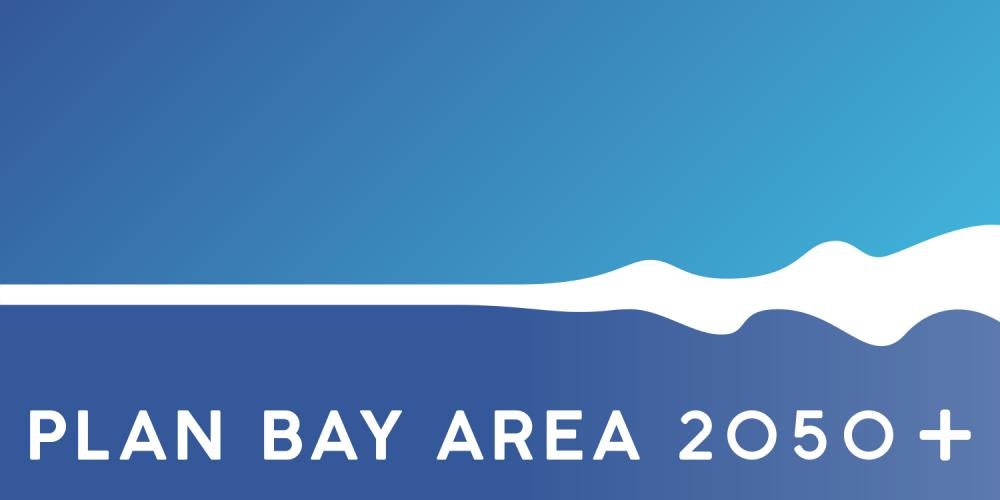
Plan Bay Area 2050+
Plan Bay Area 2050+ will build on the strong foundation of the previous plan – Plan Bay Area 2050 – to incorporate the lessons learned from the pandemic. Visit PlanBayArea.org to learn more.
What is Plan Bay Area 2050+?
Plan Bay Area 2050+ is a limited and focused update to Plan Bay Area 2050, the region’s visionary long-range plan, adopted in October 2021. At the heart of Plan Bay Area 2050 are 35 strategies spread across the elements of transportation, housing, the economy and the environment that collectively seek to make the Bay Area more equitable for all residents and more resilient in the face of unexpected challenges.
Plan Bay Area 2050+ is an opportunity to refine select plan strategies to integrate the lessons of the last three years. Additionally, the limited and focused update approach will enable continued progress implementing the strategies of Plan Bay Area 2050.
At the same time, a parallel planning process called Transit 2050+ will overhaul the six transit-related strategies that will later feed directly into the development of Plan Bay Area 2050+. Transit 2050+ will aim to address the challenges posed by our region’s fragmented transit system, as well as account for rapid changes in commute patterns brought about by the COVID-19 pandemic and significant reductions in anticipated transit revenues through 2050.
Key priorities of the Plan Bay Area 2050+ update process include:
- Education on the purpose, strategies and real-world impact of the plan,
- Leveraging findings from implementation efforts to inform refinements to select plan strategies, and
- Updating assumptions to more fully reflect the realities of the post-COVID environment.
Like the previous plan, Plan Bay Area 2050+ will connect the key elements of transportation, housing, economic development and environmental resilience to chart a course for the future of the nine-county San Francisco Bay Area, while simultaneously striving to meet and exceed federal and state planning requirements.
Over the next two and a half years, the plan will be updated in consultation with a wide range of partners, including federal, state, regional, county, local and Tribal governments, as well as community organizations, other stakeholders and the public. Plan Bay Area 2050+ is slated to be approved by the Metropolitan Transportation Commission and the Association of Bay Area Governments in late 2025. Plan Bay Area 2050+ will serve as the Bay Area's Regional Transportation Plan (RTP), as required by federal regulations, and the Bay Area’s Sustainable Communities Strategy (SCS), as required by state law.
What will Plan Bay Area 2050+ do? What won’t it do?
Plan Bay Area 2050+ is a limited and focused update to Plan Bay Area 2050. While it will pinpoint policies and investments necessary to advance the goal of a more affordable, connected, diverse, healthy and vibrant Bay Area, Plan Bay Area 2050+ neither funds specific infrastructure projects nor changes local policies. Cities and counties retain all local land use authority. Like the previous plan, Plan Bay Area 2050+ will identify a potential path forward for future investments — including infrastructure to improve our transportation system and to protect communities from rising sea levels — as well as the types of public policies necessary to realize a future growth pattern for housing and jobs.
Ultimately, Plan Bay Area 2050+ will reflect a shared vision — one that cannot be implemented by any single organization or government agency. Only through partnership with local, state and federal governments, as well as with businesses and non-profit organizations, will the plan’s vision come to fruition. Plan Bay Area 2050+ also is an opportunity to update Plan Bay Area 2050’s Implementation Plan, which details over 80 concrete actions that ABAG, the Metropolitan Transportation Commission and our partners can take to advance the plan’s 35 strategies.
請求幫助! | ¡Solicita ayuda! | Request assistance!
你需要我們翻譯其中一份文件的內容嗎? 你需要以大字體或盲文印刷的書面資料嗎? 您是否需要手語翻譯或會說您的語言的翻譯才能參與?
我們可以提供幫助! 如果您需要相關的無障礙語言服務,請致電 415-778-6757,如需使用 TDD/TTY,請撥打 711 並請求轉接至 415-778-6700。為確保能夠為您提供符合需求的安排,請至少提前三個工作日通知我們。
¿Necesita que alguno de nuestros documentos sea traducido? ¿Necesita nuestras comunicaciones escritas en letra grande o en Braille? ¿Necesita un interprete del lenguaje de señas o un interprete que hable su idioma para poder participar?
¡Nosotros podemos ayudar! Para solicitar asistencia, llame al 415-778-6757. Para servicios TDD/TTY, llame al 711 y pida que lo conecten al 415-778-6700. Le pedimos solicitar asistencia con tres días hábiles de anticipación.
Do you need one of our documents translated? Do you need written materials in large type or in Braille? Do you need a sign language interpreter or an interpreter who speaks your language in order to participate?
We can help! To request accommodation, please call 415-778-6757. For TDD/TTY, call 711 and ask to be relayed to 415-778-6700. We request at least three working days' notice to accommodate your request.

